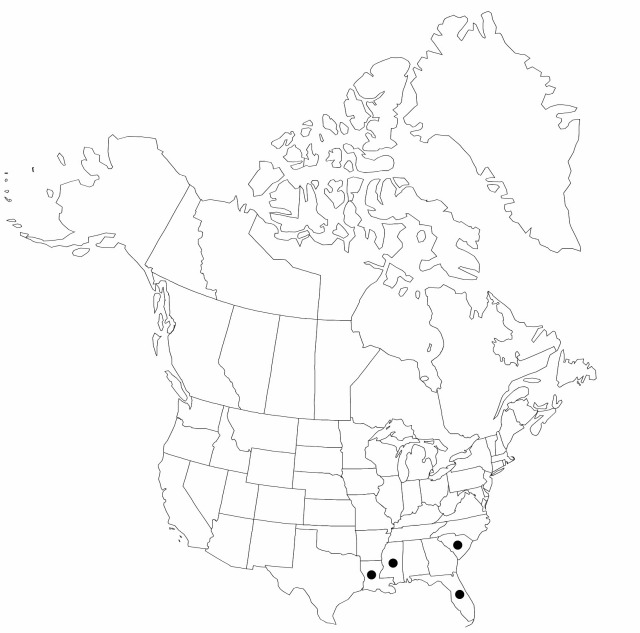Cyperus pilosus
Enum. Pl. 2: 354. 1805.
Herbs, annual or perennial, cespitose; stolons slender, to 5 cm × 1.5 mm. Culms trigonous, 25–90 cm × 2 mm, hispidulous or glabrous on angles distally. Leaves flat, 10–35 cm × 3–10 mm. Inflorescences: spikes 1–4(–6), loosely oblong-ovoid, 2–3 × 1–2 cm; rays 3–10, 1–16 cm; 2d order rays to 3 cm; rachis hispidulous, prickles slender, 0.1–0.2 mm; bracts 3–5, ± ascending, flat, 5–35 cm × 0.5–5(–7) mm; rachilla persistent, wingless. Spikelets 15–40, linear-lanceoloid, compressed, 6–12 × 1.5–2 mm; floral scales deciduous, 8–16, light brown with clear border, laterally 2–3-ribbed, ovate, 1.8–2 × 1.2–1.6 mm; apex entire, emarginate, or mucronulate, mucro at most 0.3 mm. Flowers: anthers 0.4 mm; styles 0.6 mm; stigmas 1 mm. Achenes brown, sessile, broadly ellipsoid, 1–1.2 × 0.5 mm, apex obtuse, apiculate, surfaces puncticulate.
Phenology: Fruiting summer.
Habitat: Rice fields, wetlands, emergent muddy shores
Elevation: 0–50 m
Distribution

Introduced; Fla., La., Miss., S.C., Asia.
Discussion
Cyperus pilosus was naturalized in the flora from eastern Asia, apparently early in the twentieth century.
The combination of hispidulous rachis and loosely oblong-ovoid spikes is sufficient to distinguish Cyperus pilosus from any others with deciduous floral scales.
Selected References
None.
